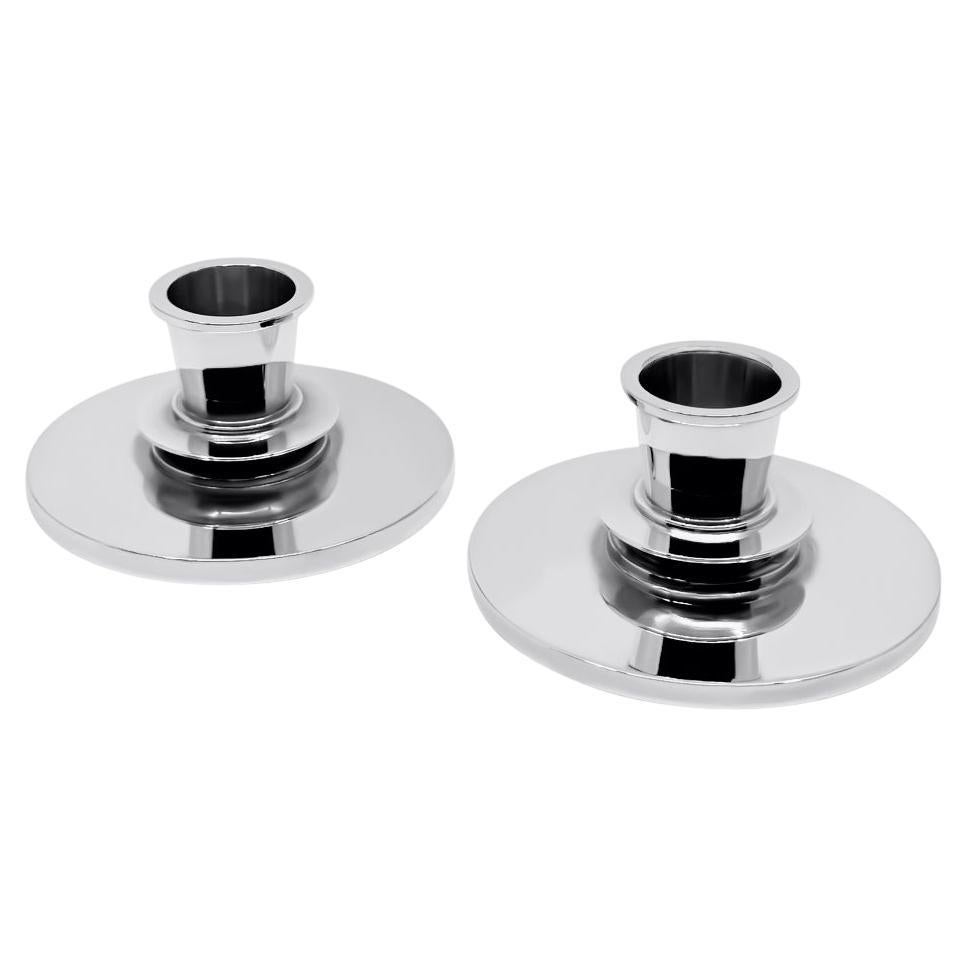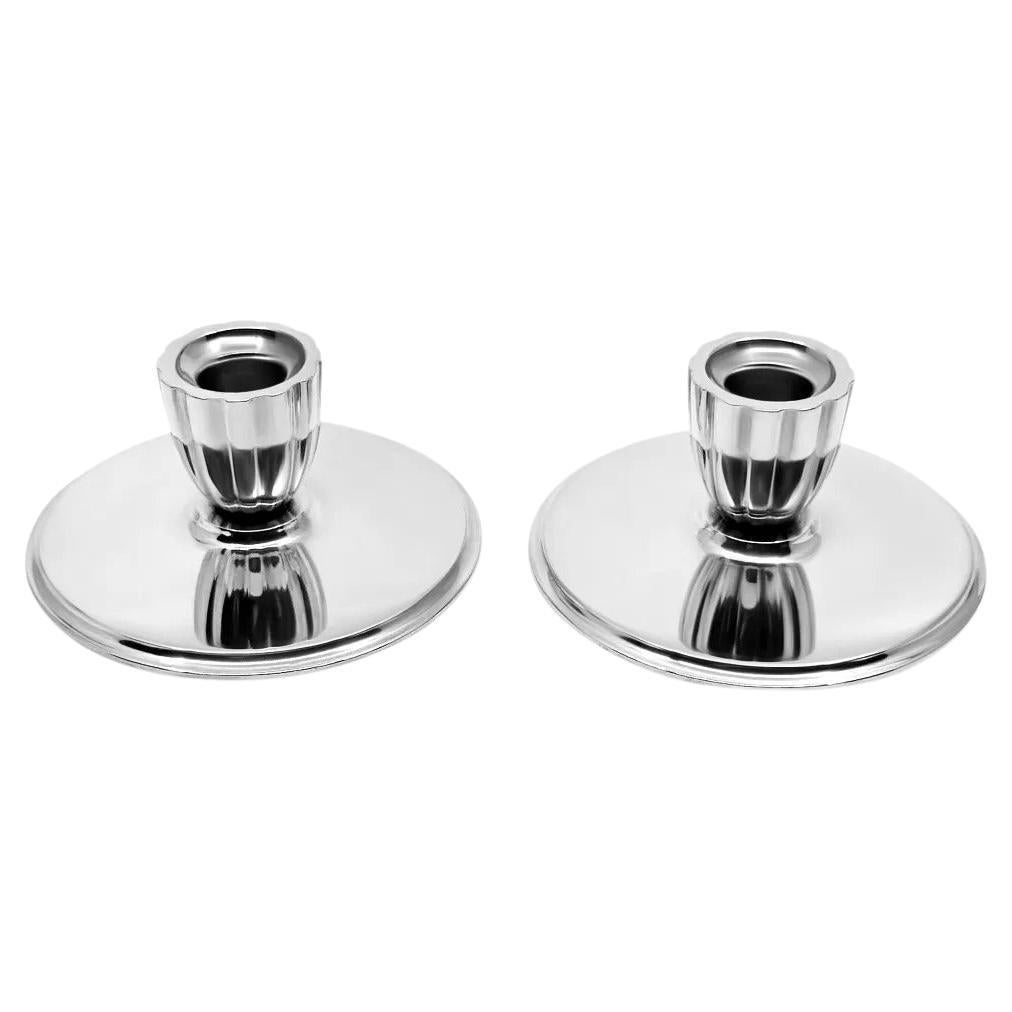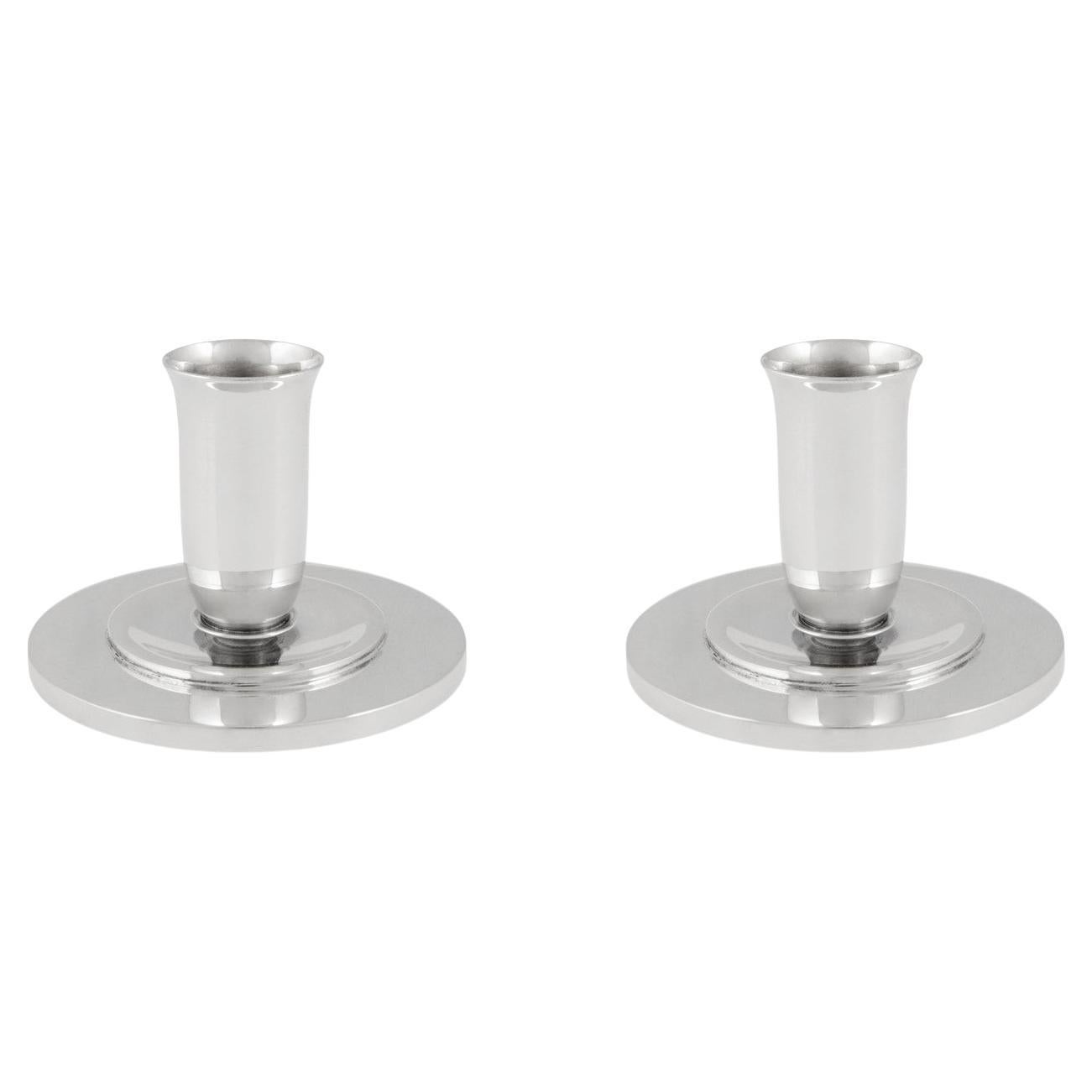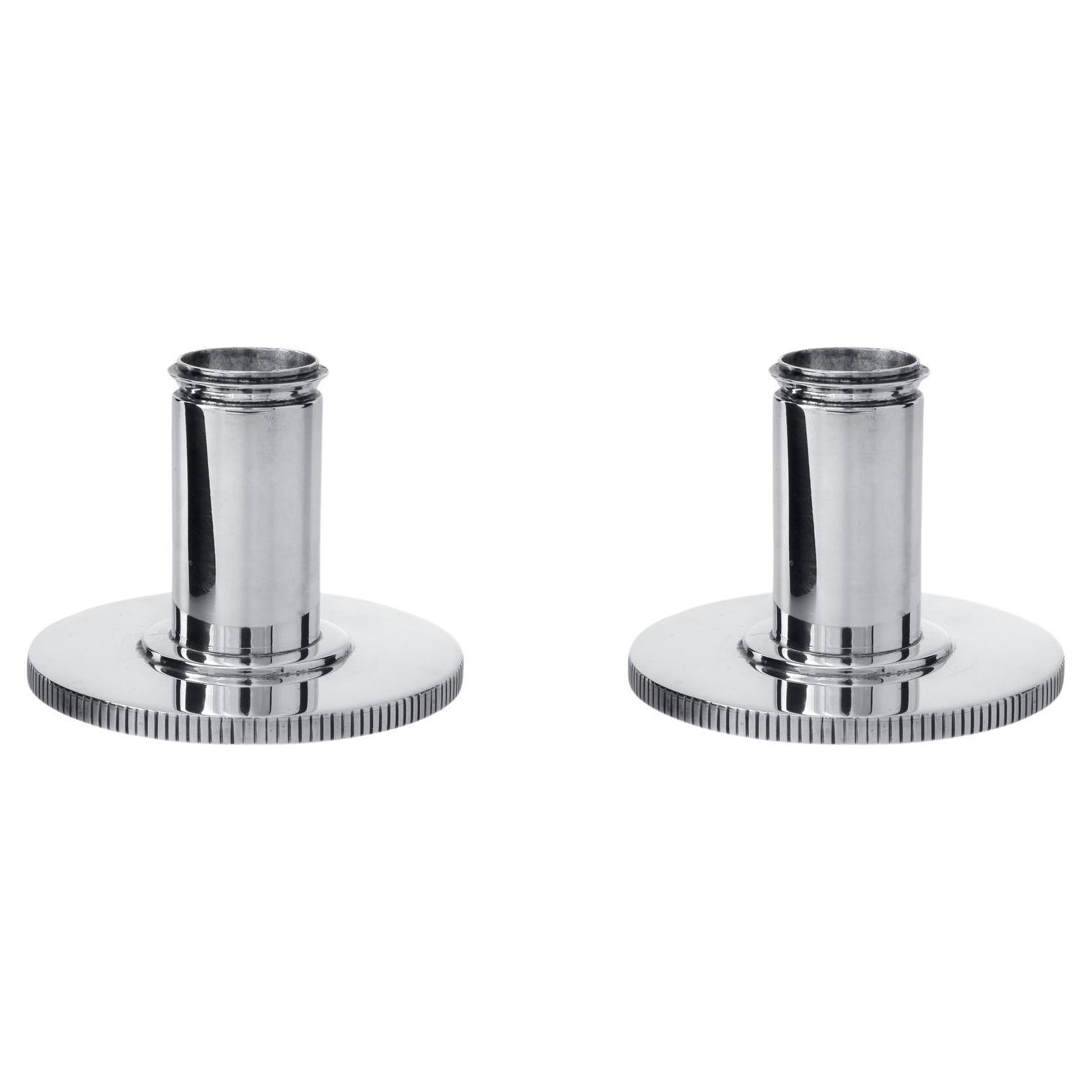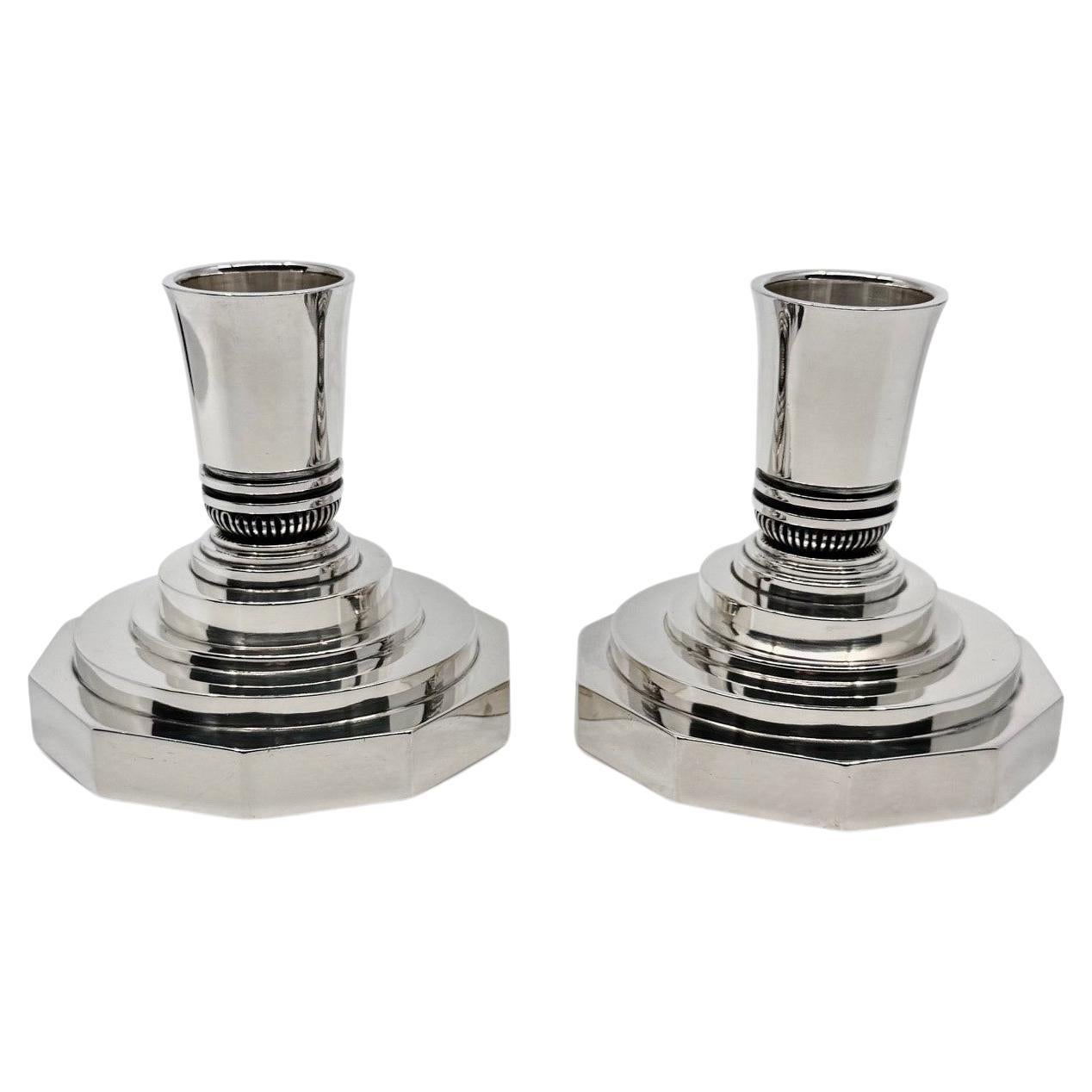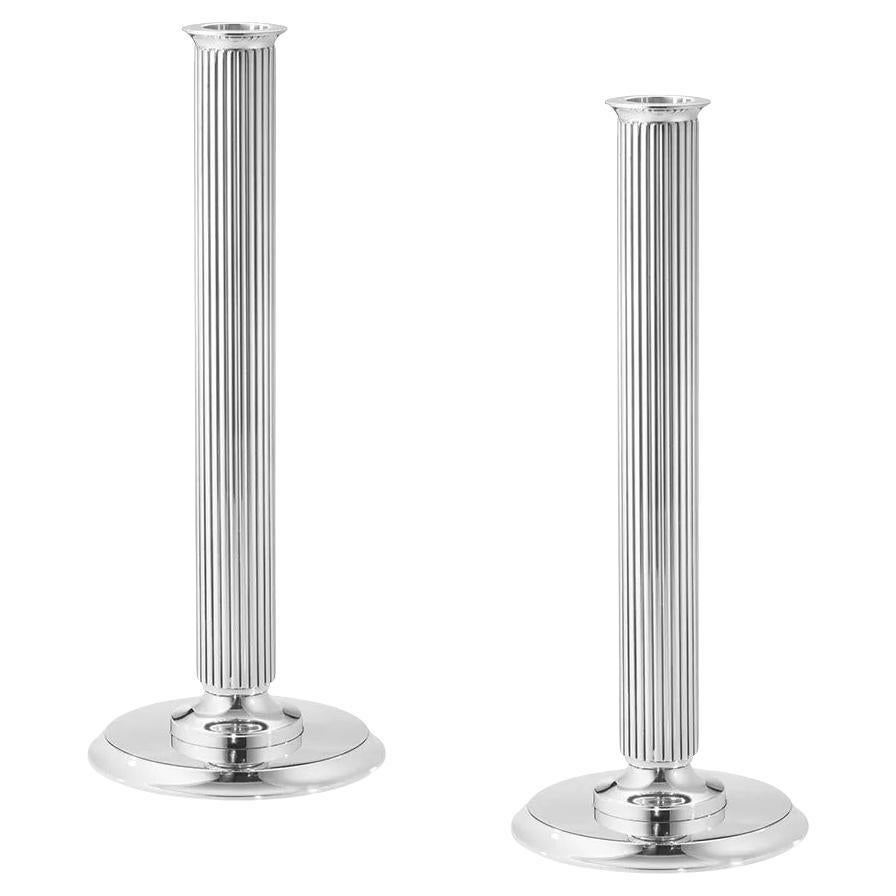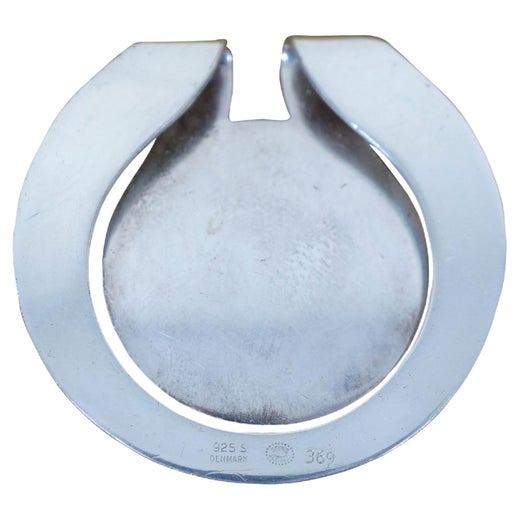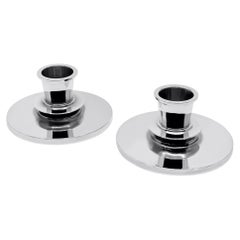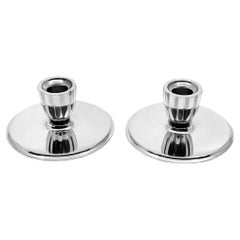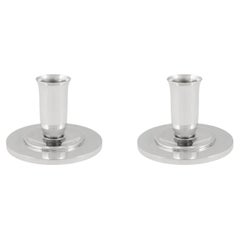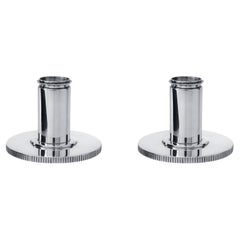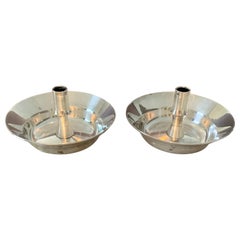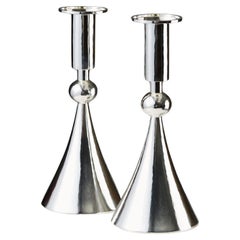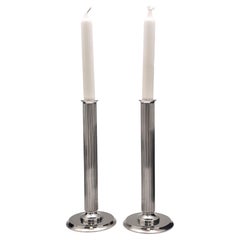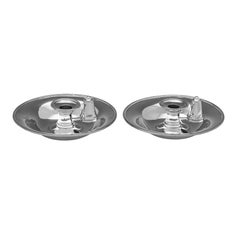Georg Jensen Sterling Silver Candlesticks 1112
About the Item
- Creator:Nanna Ditzel (Designer),Georg Jensen (Manufacturer)
- Dimensions:Height: 0.63 in (1.6 cm)Diameter: 2.76 in (7 cm)
- Sold As:Set of 2
- Style:Mid-Century Modern (Of the Period)
- Materials and Techniques:
- Place of Origin:
- Period:
- Date of Manufacture:1945
- Condition:Wear consistent with age and use.
- Seller Location:Hellerup, DK
- Reference Number:Seller: 12-426c-11stDibs: LU8418244724642
Nanna Ditzel
Nanna Ditzel was the most versatile and creative female designer that Denmark produced in the 20th century. Ditzel brought her talents to bear on a staggering array of forms — she designed furniture, jewelry, tableware and textiles; and she shaped her pieces using an equally astonishing variety of materials, from wood and wicker to silver, ceramics and fiberglass.
Born in Copenhagen, she trained as a cabinetmaker at the Royal Academy's furniture school — overseen by the great craftsman of the day, Kaare Klint — and graduated in 1943. Ditzel’s early work adhered to the classic Danish modernist tenets of simplicity, comfort and quality, and her armchairs, with their softly curved backrests are much in the spirit of Hans Wegner. Ditzel’s signature piece of that time is her Ring chair. Designed along with her husband, Jørgen Ditzel, a fabric maker, the chair has a semicircular padded armrest that seems to embrace the sitter. Ditzel began designing in wicker and in 1959 produced the Hanging chair. The piece, suspended from the ceiling by a chain, became a favorite for fashion shoots and may be as iconic of the 1960s as Eero Aarnio’s plastic Ball chair of 1963.
In 1956, Ditzel began designing for the Danish silverware firm Georg Jensen. In an association that lasted some 40 years, Ditzel would create organically shaped jewelry, barware, ceramic tableware and even tablecloths. Like her fellow Dane Verner Panton, Ditzel was not afraid to embrace industrial materials, and she began designing fiberglass chairs in the mid-1960s. Some of her most flamboyant work came toward the end of her career, in pieces such as 1989’s Bench for Two, with its shocking Op-art finish, or the Trinidad chair of 1992, with it’s sunburst-like, cut-though backs. Such feats of creativity were a fitting coda to one of the most imaginative, prolific and remarkable women of modern design.
Georg Jensen
For over a century, Georg Jensen has produced some of the finest objects in Scandinavian modern design, including silver tableware, serving pieces, home decor, jewelry and more, frequently partnering with leading artisans to expand its offerings and respond to shifting tastes. Known for minimal aesthetics that reference nature, the craftsmanship of this legendary Danish silverware firm has regularly married function with thoughtful and beautiful design.
Founder Georg Jensen (1866–1935) was born in the small town of Radvaad, Denmark, and began his training as a goldsmith at 14. After studying sculpture and then training with master silversmith Mogens Ballin, he established his own silver business in Copenhagen in 1904. By 1918, the company was successful enough to open a shop in Paris.
Jensen’s firm produced an incredibly vast range of silver objects, from serving dishes and barware to centerpieces and chandeliers. For his early work, which bore ornate floral details and other organic forms of Art Nouveau, Jensen looked to the splendors of the natural world. The 1905 Blossom teapot, for instance, was topped with a magnolia bud and deftly balanced on toad feet, while some of Jensen’s best-known flatware patterns included Lily of the Valley, introduced in 1913, and Acorn, which debuted in 1915.
Collaboration with outside designers, long before such partnerships were common in design, would lead to some of the company’s most popular and enduring work of the mid-century. Sigvard Bernadotte and Vivianna Torun Bülow-Hübe created collections, as did Henning Koppel, whose curvy 1952 Pregnant Duck pitcher is a Georg Jensen classic.
After evolving and expanding throughout the 20th century, Georg Jensen was acquired by Investcorp in 2012. Today, the company is a global luxury brand with more than 1,000 stores around the world. It continues to produce seductive new pieces, such as a tea service made with Marc Newson in 2015, as well as timeless heritage designs, including the relaunch in 2019 of the 1018 solid sterling-silver Tureen 270. In 2020, the firm introduced the Jardinière 1505. Sculptural and richly decorative, the never-before-realized showpiece is hand-hammered from sheets of the finest sterling silver and is based on a 1915 sketch from Jensen’s archives.
Find an exquisite collection of Georg Jensen serveware, ceramics, silver and glass today on 1stDibs.
- ShippingRetrieving quote...Shipping from: Hellerup, Denmark
- Return Policy
More From This Seller
View AllVintage 1930s Danish Art Deco Candlesticks
Sterling Silver
Vintage 1940s Danish Art Deco Candlesticks
Sterling Silver
Vintage 1940s Danish Art Deco Candlesticks
Sterling Silver
20th Century Art Deco Candlesticks
Sterling Silver
Vintage 1930s European Art Deco Candlesticks
Sterling Silver
Vintage 1930s Danish Art Deco Candlesticks
Sterling Silver
You May Also Like
20th Century Danish Mid-Century Modern Candlesticks
Silver Plate
Vintage 1960s Swedish Scandinavian Modern Candlesticks
Silver, Sterling Silver
20th Century Danish Candlesticks
Silver, Sterling Silver
Antique 1870s English Victorian Candlesticks
Sterling Silver
20th Century Danish Modern Candelabras
Stainless Steel
Vintage 1960s Swedish Scandinavian Modern Candle Sconces
Sterling Silver
Read More
5 Fantastic Jewelry Finds, from the 19th Century to Now
Jewelry historian Vanessa Cron combed 1stDibs and selected some dazzling pieces with timeless appeal.
Jacqueline Rabun’s Fluid, Minimalist Jewelry Designs Are Inspired by Life Experiences
Motherhood is one of the influences that has shaped the longtime Georg Jensen collaborator's quietly powerful creations.
